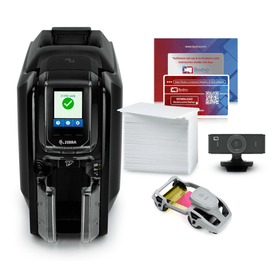You just bought a new ID card printer after deliberating a long while, and have now brought it to your home or office and set it up on your desk. Plugging it into the wall power supply and connecting it to your computer is all it takes to be able to start printing. With that out of the way, and not much printing to get done, you have time on your hands to plan how you are going to take care of this new equipment.
Like most other things, ID card printers can be made to work better and last longer, depending on how well you take care of them. They also have a lot in common with regular printers when it comes to this aspect; you need to configure them properly on the computer you intend to be controlling them with. That means downloading and installing the latest drivers from the manufacturer’s website.
Similarities with Regular Printers
Where your PC is concerned, ID card printers are just regular printers, in that your older machine cannot tell the difference. For most ID printers ID card software is not a must; you could use just about any stock application capable of rendering and starting a print job. Your PC only sees the output dimensions as different from normal (a plastic ID card typically has dimensions of 3.375 x 2.125 inches). That said, it is usually smarter going with a dedicated ID card software in cases where the printer has special features you want to make use of.
Maintaining the Print Head
Replacing the print head on your ID card printer is fairly easy, but it can be expensive if you mess it up. The two ways people generally pick between, are as follows.
- Using a pre-punched card: This is not a good idea normally. While saving time, it also introduces an unnecessary risk of damage to the print head. Since they operate through the application of heat, ID card printers are capable of accidentally damaging card plastic when the print head moves under it. If the latter moves over a scratch or punch hole, it can damage the bumpy areas, and ruin the card. The smart way is to punch your card only after it has been printed on.
- Not leaving the cover open: Leaving your ID card printer’s cover open leaves the print head exposed, and it can incur damage in a variety of ways. Make sure the cover is securely closed, excepting times when you actually need it to be kept open.
ID Card Ribbons
The ID card ribbon is what supplies the “ink” for your print jobs, although it works differently from laser jet and ink-jet cartridges. Ribbons of this kind are accompanied by a dispenser holding the rolls, or simply come as rolls. Around the latter, you would have different color panels, the types of which can be used to swiftly identify each ribbon. The setup also includes the overlay, which is a transparent panel covering the entirety of the card, and protecting the colors already printed on it. Some ribbons some without overlay, and using one of these would mean your print colors would disappear quickly.
It is not possible to save on ink, mainly because each ribbon has a preset number of prints. YMCKO ribbons with 250 prints, for instance, can only print 250 cards each; it does not matter if your design is no more than a tiny logo. Panels start moving around the second roll, which means that when the first one runs out, you need to do a refill. Because the printing is edge-to-edge, there is no chance of saving ink. Meanwhile, you need to refrain from opening and closing the cover without ample reason. Every time you do this, the printer syncs the ribbon, and you lose several panels as a result. Therefore, make sure you only open the cover in case of a card jam, or another serious problem.
In thermal printers, it is normal for ribbons to break inside the printer every now and then. Just do not throw the thing away because this happened; instead, get some scotch tape and affix the end of this to the next roll. Turn the first roll over a few times until the scotch tape is impossible to spot, and then close the cover. This would cause the printer to sync the ribbon, after which you can get back to printing cards as before.
If ribbon breaks become frequent, the first thing you need to do is check the properties in your PC of the print head you are using. This may have been set too high sometime, and if heat from that is what is causing the ribbon to get cut, adjust that accordingly.
















